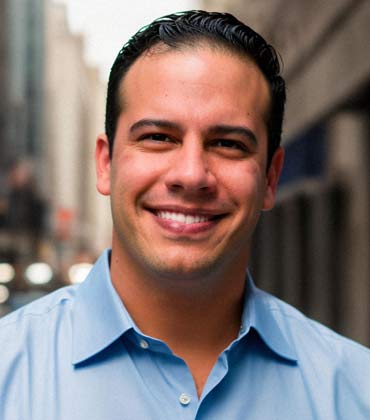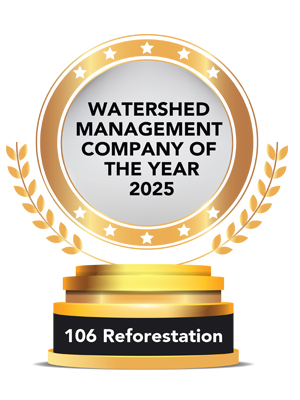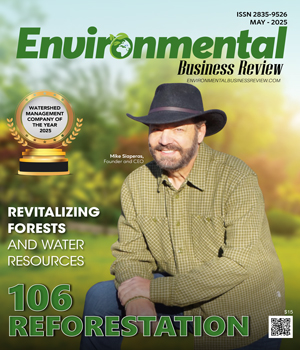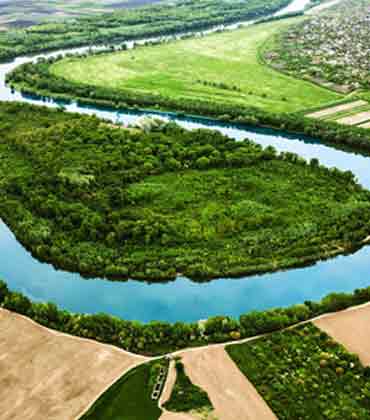Thank you for Subscribing to Environmental Business Review Weekly Brief
Environmental Business Review: Specials Magazine
In the world of forest and watershed management, where traditions run deep, innovation is often met with skepticism. Mike Siaperas, founder and CEO of 106 Reforestation knows this resistance firsthand. When Siaperas started the company, he aimed to solve a problem he had seen too often: existing techniques, though well-established, were failing to address the scale and urgency of modern environmental challenges to high elevation forests in the U.S. “The way we’ve been doing things just isn’t fast enough,” Siaperas explains. “We need to treat more acres, with fewer resources, and we need to do it now.” This belief became the backbone of 106 Reforestation’s approach—a commitment to pace, scale, and precision in restoring forests and watersheds. Over time, that commitment has evolved into a company that is redefining what’s possible in this critical field. Building a New Approach From the beginning, Siaperas’s approach was different. Rather than following the standard playbook (which usually involves fire at some point in the process), he asked a bold question: How can we achieve better results using fewer tools and less manpower? His answer lay in technology. The company developed patented software and specialized equipment that allows for swift hypertargeted treatments, ensuring every action taken on the ground serves a clear purpose. This technology is a mechanical process using specialized machines that duplicate the mosaic patterns of forest and meadow that are created with natural fire, with a recovery time that has shown to be much faster. Additionally, it enables managers to track operations in real time, whether they’re in the middle of a forest or sitting in an office miles away. It’s a level of precision and transparency that’s rare in this field. “We can show exactly what’s happening as it happens,” Siaperas says. “That’s a game-changer.” The results speak for themselves. By thinning forests strategically and replacing aging, less efficient trees with younger, more productive ones, 106 Reforestation has demonstrated they can dramatically improve water availability, reduce wildfire risk; plus sequester atmospheric carbon and methane instead of accelerating it. The company’s methods replicate the natural benefits of a forest fire—clearing out dead wood and promoting new growth—without the using fire. This delicate balance between innovation and respect for nature is a hallmark of its work.
Top Flexible Packaging Solutions 2025
The moment a consumer picks up a product, its packaging tells a story even before a single word is read or a seal is broken. More than just a protective shell, it shapes perceptions, influences purchasing decisions, and signals a company’s commitment to environmental responsibility. Morris Packaging, an MBE manufacturer emphasizes that sustainable packaging shouldn’t be an afterthought. Rather, — when done right — it will serve as a powerful differentiator that effortlessly elevates a product’s appeal and reinforces its value. Rooted in this understanding, Morris Packaging combines custom engineering, eco-friendly materials and supply chain optimization to create efficient, high-performance packaging that seamlessly integrates into existing production processes. “We help businesses switch to sustainable packaging without sacrificing production speed,” says Brian Steinwagner, Executive Vice President. “We have invested time and engineering expertise to overcome this by developing sustainable packaging that maintains high production speeds, assuring that clients do not experience operational slowdowns.” A key differentiator of their packaging is the use of up to 45 percent recycled content, maintaining strength while reducing reliance on raw materials. By incorporating post-consumer and post industrial recycled materials, the solution remains cost-efficient, with little to no increase in cost at this inclusion rate. The company offers 100 percent recycle-ready packaging options, enabling companies to meet sustainability goals while maintaining the same level of durability and functionality. It also provides tailored recommendations on materials, recyclability and the best options for their specific operational requirements. The company recognizes that material selection alone does not define sustainability and takes a comprehensive approach to ensure that all packaging solutions align with long-term waste reduction strategies. It begins with a detailed pre-audit of the client’s production environment, assessing machinery specifications, filling conditions and compatibility with existing workflows..
CXO INSIGHTS

Leveraging Waste Data to Drive Sustainability in Your Operation
Ian Renteria, Global Environmental, Health and Safety Director, Pregis

Food Science and Engineering for the Future of Humanity
Kaan Demiryurek, R&D Director - Global R&D - Sustainable Packaging, PepsiCo

Mastering the Art of Contract Management
Matthew Hancsarik, Deputy Director- Contracts, North Wind Group

Shaping Watersheds With Precision And Purpose
Janae Spence, Assistant Director - Watershed Protection Department, City of Austin

Strategic Initiatives for a Cleaner Energy Future
Ivon Louis-Letang, Energy Manager, Eversource Energy
IN FOCUS
Watershed Management: Balancing Today and Shaping Tomorrow
Watershed management is essential for preserving both water quality and availability. It aids in mitigating soil erosion, lessening flood impacts, and fostering sustainable land use practices.
EDITORIAL
Eco-Driven Advances in Packaging and Water Management
As the world grapples with climate change and resource scarcity, sustainability has evolved from a buzzword to a global mandate. Industries are reimagining their operations, prioritizing solutions that deliver performance without compromising ecological integrity. Flexible packaging minimizes waste and enhances recyclability, while watershed management tackles water conservation and ecosystem health in the face of growing environmental pressures. Together, these fields demonstrate how innovation can align profitability with planetary stewardship, setting a blueprint for a resilient future. Flexible packaging is transforming how products are designed and delivered. Offering lightweight, customizable solutions that reduce material consumption, these advancements extend product shelf life and enhance visual appeal on retail shelves. Sustainability is at the forefront, with companies pioneering compostable materials, closed-loop recycling systems, and smart packaging that improves supply chain efficiency while strengthening consumer engagement. At the same time, the escalating threats of climate change and water scarcity have catalyzed a surge of innovations in watershed management. Solutions like AI-powered hydrological models, real-time monitoring and comprehensive ecosystem restoration initiatives are revolutionizing how we safeguard vital water resources. These technologies enable more precise water flow management, enhance ecosystem resilience and empower communities to respond proactively to environmental risks. In this edition of Environmental Business Review, we proudly showcase the Top Flexible Packaging Solutions of 2025 and honor 106 Reforestation, as this year’s Watershed Management Company of the Year 2025. These industry pioneers are pushing the boundaries of sustainable innovation—from advancing recycling loops and developing compostable packaging to transformative watershed restoration. Such advancements are impacting industries and making a meaningful difference by paving the way toward a more sustainable and secure future. Adding further perspectives, this edition includes thought leadership articles from Ivon Louis-Letang, Energy Manager at Eversource Energy. He envisions a future where AI enhances grid resilience, efficiency and sustainability. Also featured is Jim Helvig, P.E., Vice President of Operations at Dashiell Corporation, who outlines how improved regulations, energy corridors and advanced technologies are shaping a cleaner, more reliable power grid designed to meet the evolving demands of modern economies. We hope this edition of Environmental Business Review provides valuable insights into the trends shaping the future of sustainable practices and environmental stewardship. Let us know your thoughts!








